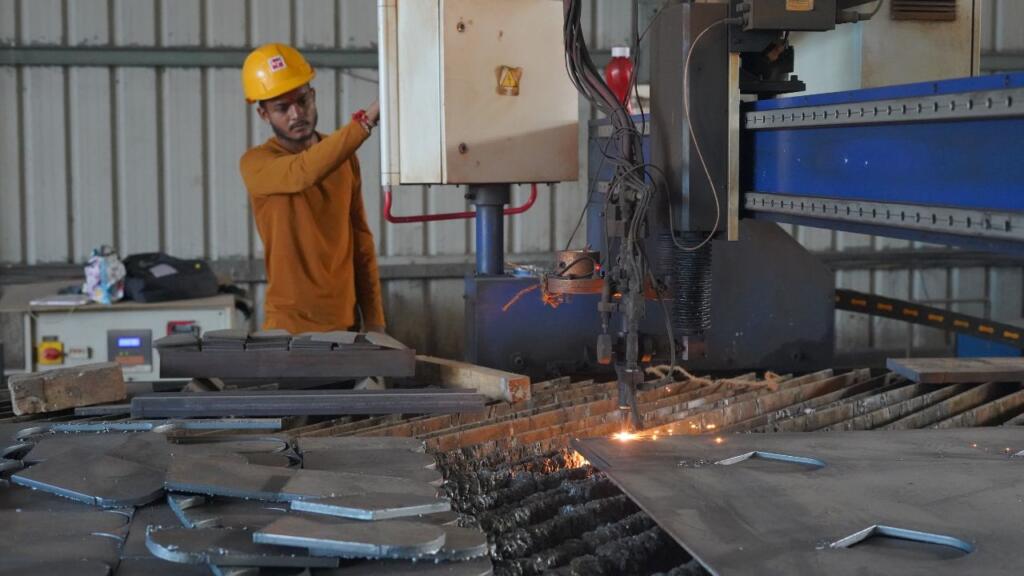In May, India’s manufacturing sector experienced a slight slowdown, reaching a three-month low in growth. This dip was primarily influenced by a heatwave that swept through various regions, prompting some companies to adjust their working hours to cope with the extreme weather conditions. However, despite this temporary setback, the overall factory activity and economy remained robust, largely supported by strong international sales. Let’s delve deeper into the intricacies of May’s manufacturing landscape in India.
Impact of High Temperatures on Manufacturing Activities
Throughout May, India encountered exceptionally high temperatures, particularly exceeding 50 degrees Celsius in certain northern and western regions. Such extreme weather conditions can significantly impact working environments within manufacturing facilities, leading to disruptions in production schedules and affecting productivity levels. It’s not uncommon for companies to implement measures such as adjusted working hours or increased ventilation to mitigate the adverse effects of heatwaves on their workforce and operations.
HSBC Final India Manufacturing Purchasing Managers’ Index (PMI)
The HSBC final India Manufacturing Purchasing Managers’ Index (PMI), compiled by S&P Global, serves as a key indicator of the country’s manufacturing performance. In May, this index recorded a slight dip, decreasing to 57.5 from April’s 58.8. While this figure fell below the preliminary estimate of 58.4, it’s important to note that the index has consistently remained above the crucial 50-mark for almost three years, signifying continued expansion in the manufacturing sector.
Insights from HSBC Economist
Maitreyi Das, a global economist at HSBC, provided valuable insights into the factors influencing May’s manufacturing performance. Despite the slowdown in the pace of expansion, Das noted that the sector remained in expansionary territory. This deceleration was primarily attributed to softer increases in new orders and output. However, amidst these challenges, there was a notable silver lining – new export orders surged at the fastest pace in over 13 years, indicating a strong and sustained demand for Indian manufactured goods in international markets.
Economic Growth Outlook
India’s economy has been on a steady growth trajectory, with the manufacturing sector playing a pivotal role in driving this momentum. Recent government data revealed a robust 7.8% year-on-year growth in the economy for the January-March quarter, with manufacturing contributing significantly to this positive performance. Economists are optimistic about the outlook for the remainder of the year, anticipating continued strong growth supported by favorable economic conditions and sustained demand.
Impact of National Election
The ongoing national election, which commenced in April and is set to conclude in June, has inevitably influenced manufacturing activity. Despite this, key indicators such as the output and new order PMI sub-indexes remained historically strong. This resilience can be attributed to positive demand trends and favorable economic conditions, which have overshadowed any temporary disruptions caused by the electoral process.
Surge in International Sales
One of the noteworthy highlights of May’s manufacturing performance was the surge in international sales. This surge marked the strongest rate in over 13 years, underscoring the competitiveness of Indian manufactured goods in global markets. Moreover, this uptick extended the trend of rising export orders for an impressive 26 consecutive months, indicating sustained and robust demand from international buyers.
Positive Sentiment and Job Creation
Business sentiment within the manufacturing sector reached its highest level in more than nine years. This optimism stems from expectations of continued buoyant demand in the foreseeable future. Consequently, companies responded by increasing hiring at the fastest pace since November 2022, further fueling optimism and confidence in the industry’s growth prospects.
Inflationary Pressures and Margins
However, the surge in demand also brought along inflationary pressures, particularly in terms of input and output prices. This increase in costs, spanning electronic components, packaging, plastics, and steel, has squeezed manufacturing margins. Manufacturers have struggled to pass on these cost increases to consumers entirely, resulting in a tightening of margins across the sector.
Reserve Bank of India’s Monetary Policy Outlook
Inflation in India has largely remained within the Reserve Bank of India’s target range since September 2023. Despite this, there are expectations of a repo rate hold in the upcoming June meeting, followed by potential interest rate reductions in the October-December quarter, as indicated by a Reuters survey.
In conclusion, while facing certain challenges such as the impact of heatwaves and election-related disruptions, India’s manufacturing sector and economy has demonstrated resilience and sustained growth. Strong international demand, positive economic indicators, and an optimistic outlook for the future has fueled this growth. As the sector continues to navigate through various challenges, it remains poised for further expansion and development in the months ahead.
ALSO READ: Reserve Bank of India called back its 100 Tonnes of Gold
